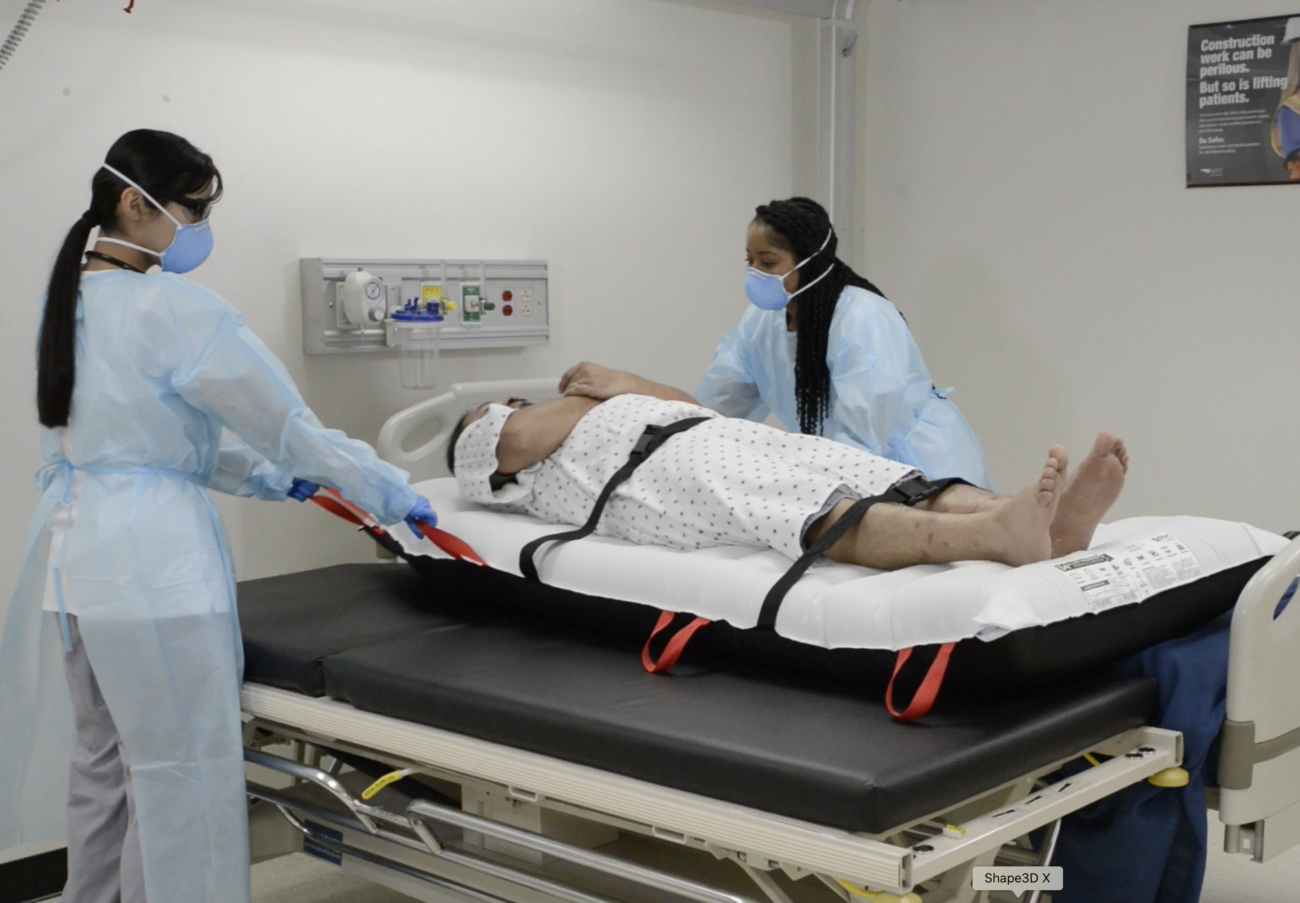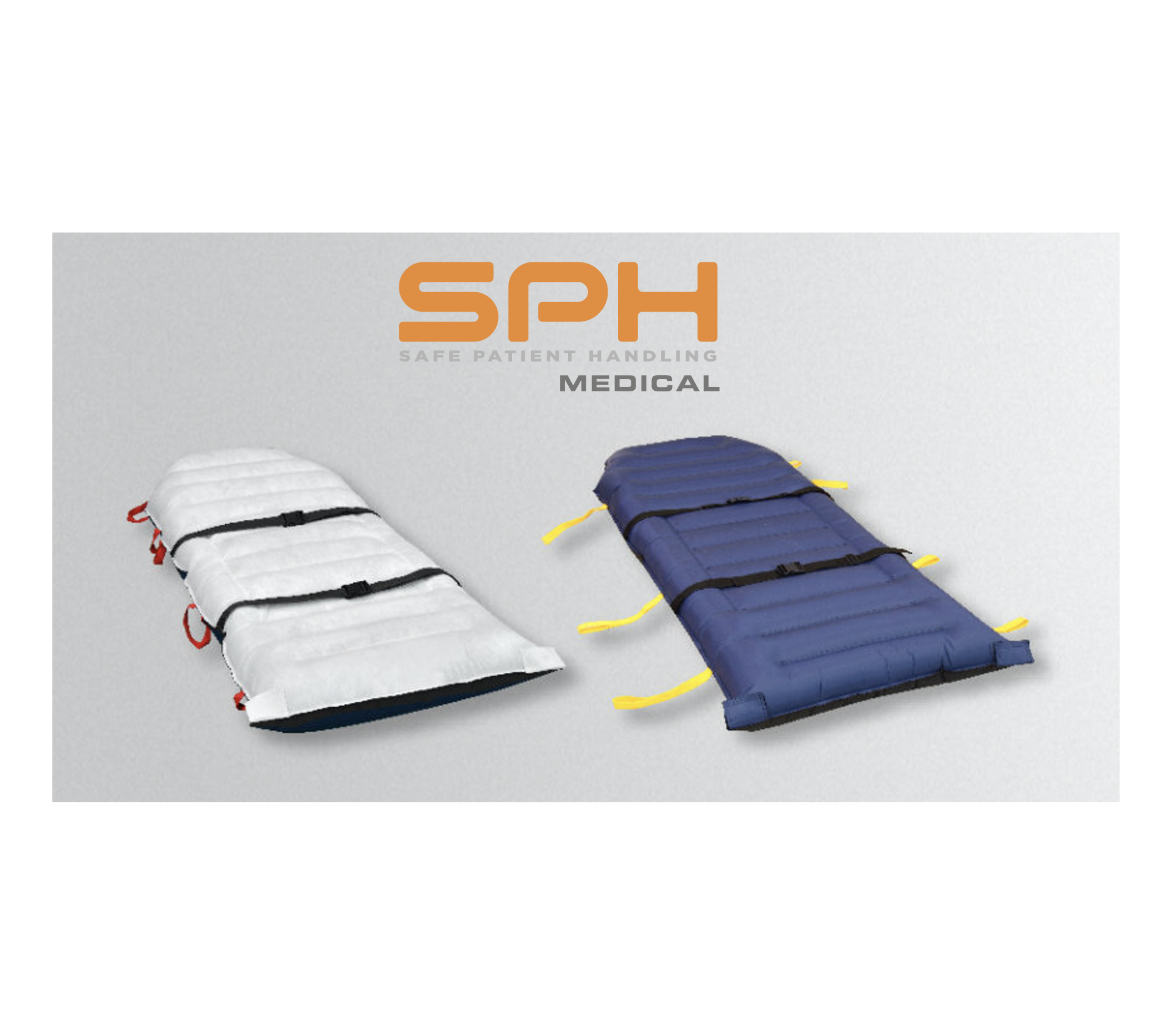Obesity rates are increasing at an alarming rate, with over 42% of adults in the morbidly obese spectrum. This increase in weight nationally causes a direct strain in healthcare industry, where healthcare workers’ risk of injury while at work increases significantly. An air assisted transfer system makes an immediate impact on injury rates and accidents. The Bureau of Labor Statistics reports that nurses, attendants, orderlies, and nursing attendants call for more sick days due to occupational injury, especially during in bed repositioning of patients in the ICU.
Dangers to caregivers
Nurses have highlighted the challenges of caring for morbidly obese patients but the problem does not lie with just the larger patients. The old fashioned manual lifting, moving, pushing, pulling and supporting patients is taking a the toll on nurses back, hips, and shoulders. Many have expressed the need to implement a safe patient handling program to reduce injuries. A survey conducted showed that in 12 months, 21% of all reported injuries were directly linked to caring for a patient of size. Most of the survey respondents were quick to complain about shoulder discomfort, strain and pain in their back area for up to 24 hours after transferring patients to bariatric beds. Serious injuries have resulted in up to 12 % of nurses to leaving the workforce yearly, many are older experienced nurses that we can’t afford to have leave. With a nursing shortage continuing to plague the healthcare sector and injury rates persisting, many states took action and began enacting healthcare worker protection laws.
The National Institute of Health reports that healthcare workers are five times more likely to experience injuries than in other occupations. Today, state and national legislation is driving the adoption of Safe Patient Handling principles into everyday patient care. Organizations like the ANA American Nurses Association, AORN, Mobility Matters, ASPHP and others all support the integration of Safe Patient Handling and an air assisted transfer system into nursing and physical therapy practices.
Patient safety
Patients of all sizes also risk injury when being moved or mobilized. as data shows there are countless near misses that always place both health care workers and patients on edge. Worse still, traditional systems to move the patients usually need two or more staff members to transfer the patients. The high rates of injuries reported by nurses increase the need for the recruitment of nurses at all times. Other patients feel the gap as more staff attend to one patient, leaving other areas lacking, making the patient-to-nurse gap even larger. Still, morbidly obese harnessing equipment for patients after surgery can cause harm leaving nurses feeling the situation is out of control.
The movement in itself may tear stitches, or the equipment may fail, causing injury to the patient, elongating the healing period, which may further increase when moving them again. Still, nurses cannot determine the right positioning of the patient due to the large mass, making it harder to safely secure them, leaving them to judge if the patient’s body is adequately resting. Unfortunately for the patients, no blame is on the nurses if an accident occurs. Although the patient’s care is on them, they cannot satisfactorily handle their duties due to the lack of technology.
Facilities and equipment
The first step to minimizing injury rates in nurses has been recognizing and monitoring near-miss situations. It has led to medical facilities devising safety measures to aid nurses, leading to purchasing specialized equipment for better repositioning up in bed. The good news is that those safe patient handling programs work. New hospitals are at the forefront of installing ceiling lifts for easy access and use of safety equipment. Older hospitals work to have the equipment fitted into the facilities. The problem arising is that they cannot be installed in many hospital areas.
Affordability is also an issue in many facilities. The special equipment for a standard bariatric room costs above $55,000, which is extremely high than a standard bed constant of $12,000 for a ceiling lift. Early investment is recommended. Still, mobile lifts are often ignored in most facilities, and the most preferred option is the Air Transfer system. It works to get morbid obese patients from the bed to the CT table, the OR table, and the gurney. Its portability ensures that it moves with the patient and nurses, reducing the risk of injury to both parties, especially when repositioning a patient in bed. Its popularity peaks as its breathable material makes it possible to stay under the patient for their entire length of stay, allowing nurses to reposition, boost, turn or transfer to a stretcher for a test or surgery. Infection prevention is enhanced as the Single Patient use air transfer mattress is disposable and used only per patient.
The challenge
Nurses have a new challenge of using specialized equipment. Some nurses say they have no time to use the equipment due to the patient care workload they face on certain inpatient units. Typical excuses are looking for the equipment takes too long, the lifts needing setting up, we’re always missing slings due to laundry, or it takes up to three or more caregivers to perform a certain task which takes too long. Nurses agree that they prefer simple equipment that takes time to set up, like the air transfer mattress. Still, in many facilities, there are storage issues and the mobile lifts take up too much space. Nurses find that the Air Transfer System is much easier to store and make available on the unit. When the appropriate equipment is not available or accessible to nurses they are forced to continue to lift patients manually. and have no place to complain as the equipment is already within the hospital facility; it is just inaccessible. Hospital administrators are seeing the benefits of reduced workers compensation costs, a reduction in lost and modified duty days and an overall improvement in staff safety and morale when the appropriate safety equipment is made available on each and every nursing unit. The conclusion from hospitals across the country is that nurses are safer using the air assisted transfer system when caring for morbidly obese patients.


